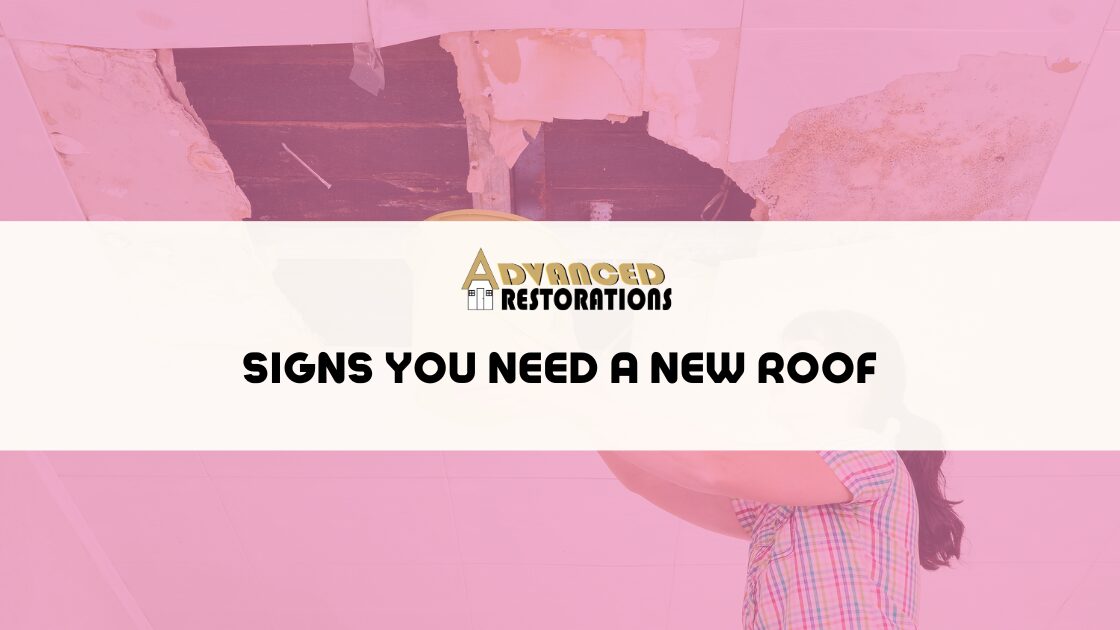
Signs You Need A New Roof
Oftentimes roofs are something that homeowners forget about until an issue becomes apparent. One of the first issues that can become apparent is when a leak springs and it becomes too late. Don’t wait until water is raining from the ceiling to give your roof the attention that it needs!
Leaky Roof
A lot of people believe that leaks in your roof will immediately cause water to enter into your home. However, many roof leaks are small and often go unnoticed until there is a larger issue. The first place to look for signs of leaks is actually on the interior of your home vs the exterior. Start by taking a flashlight into the attic shining the beams under the eaves of the home. As you shine the light, if you notice any beams coming through the top of the house, stains, or streaks, this is a sign of a leaky roof. Scheduling a roof inspection every few years or after a major hail storm are great ways to stay proactive in avoiding major leaks. An inspection by a roofing professional can save you time, as they can quickly identify any signs of damage and determine the best course of action to maintain a quality roofing system for your home.
Paperwork – Roof Warranty
When wondering if your roof needs to be replaced, it is always a good idea to review your home improvement records to identify the last time the roof was replaced or reshingled. Knowledge of when your roof was last installed along with its materials can provide insight into how much life your roof has left. For example, the average asphalt shingle roof is meant to last 20 to 25 years and if the roof was installed over an existing layer of shingles it should be replaced closer to 20 years. Along with identifying the age and predicted lifespan of your roof, make sure to check on your home warranty to see if any maintenance is required within a specific timeline.
Roofing Shingles
After checking on the interior of your home and looking back on the age of your roof along with the materials used last, it is now time to check on the exterior of your home for issues. It is good to occasionally check on your rooftop to make sure it’s in quality shape. We advise that homeowners check on their rooftops after major storms, especially ones with hail in your area. Remember that shingles should always lie flat against your roof so if you notice any patches that are starting to buckle, coming off the surface, this could be a sign of poor material or wind damage. If you notice any patches that are cracked or damaged, then repairs are most likely in order. While checking on the quality of the shingles, make sure to check the gutters and downspouts for shingle granules, as this could be a sign of shingles being at the end of their useful life. Additionally, keep an eye out for any dents in the gutters or vents on your rooftop, for this is often a more apparent sign that your rooftop has suffered from hail damage. Make sure to contact a roofing professional to inspect your home right away if you start to notice any of these signs of rooftop damage.
Roof Flashing
The flashing can be found around vents, skylights, and chimneys and is utilized to seal the seams of the roof from rain and weather. Examine the points listed previously to make sure there are no cracks or breaks, as these could lead to leaks in the roof. In older homes, flashing often consists of roof cement or tar. If this is the case, we still recommend upgrading to a metal flashing system for added durability and protection from leaks.
Sagging Roof
If you notice your roof is droopy or sagging at all, then it is surely in need of a replacement and important that your replace before further damage could occur to your home. Examine the roof exterior surface and the interior ceiling for any signs of trapped moisture, rotting boards, or any sagging spots. The lowest points in the roof are often the best places to look for signs of sagging.
Moss on Roof
Some might find moss to be a nice decoration, but when it comes to roofs this is typically a sign of unwanted issues. Moss, mold and any other fungi can be an indication of trapped moisture, which can cause greater issues for a roof. Make sure to brush away any moss that collects in the shaded corners of your roof. We recommend carefully brushing the moss away with a stiff brush. Make sure to examine and address any underlying problems such as trapped moisture.
We dedicate ourselves to providing homeowners peace of mind by offering complimentary inspections. With years of roofing experience, we take pride in our ability to identify improperly installed roofing systems and prevent long term damage before it is too late!
Contact us today to schedule a complimentary inspection!
